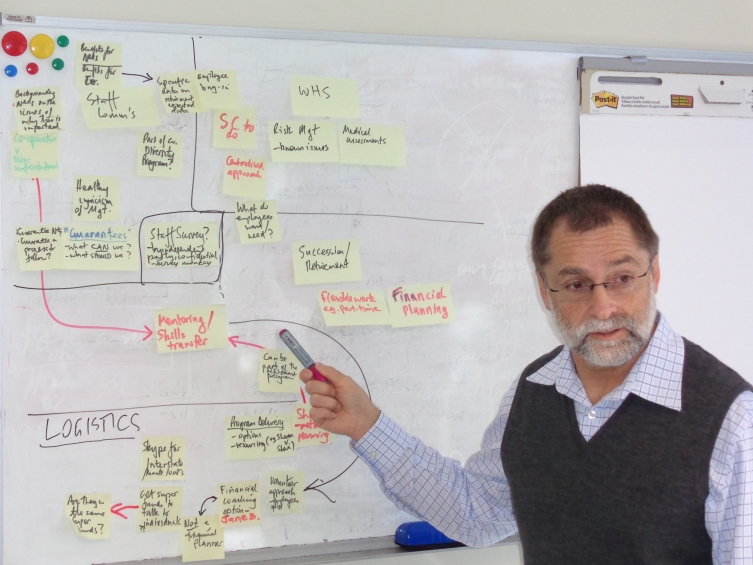
Negotiating enterprise agreements can be a complex business. Mind maps are excellent visual tools that help diagram and organise complex information, which can be performed very effectively in front of others.
Benefits of Mind Maps
Mind maps are excellent visual tools that help diagram and organise complex information in front of everyone. Mind maps can begin with a central idea, goal, or issue. Associated ideas then stem off in branches from the main idea, goal or issue, like they do off a tree.
Alternatively, they can start from the bottom up, with a "brain-dump" exercise of all known information and issues, to be arranged into associated or related groups. Then linkages can be drawn out from the arranged information.
Mind mapping forces you to think outside the box, and to produce as many ideas as possible in finding a solution.
Mind maps clarify steps of negotiation
The benefits of mind mapping are highlighted in Fisher & Ury’s international best selling book ‘Getting to YES: Negotiating an Agreement Without Giving In’. They outline a four step mind mapping strategy to help discover new options of negotiating solutions -
1. Identify the problem. Identify what is wrong and what are the symptoms.
2. Analysis. Systematically diagnose the problem and sort symptoms into categories. Highlight barriers to resolving issues.
3. Approaches. Generate broad ideas or possible strategies to solve the problem.
4. Action ideas. Map out specific steps of how to deal with the problem.
For the Director of enterprisebargaining.com.au, Steve Champion, mind mapping is his religion. He says even he is astounded by the hidden solutions that "appear" after throwing up all the possible solutions to business challenges using mind-mapping techniques.
A Mind Map Anecdote
Financial advisor Rob O’Dell described in a recent article in the Wall Street Journal how a family business dispute led him to an unusual technique of negotiation to simplify the process.
Two brothers wishing to sell their shares in the family business became involved in a dispute about how to split the assets. The split involved complex business finance and was causing family dynamic issues.
O’Dell, in a bid to enlighten the brothers to each other’s perspective, drew up a mind map with the disputed business at the centre. O’Dell encouraged the brothers to work together to map out their combined perspective of business interests, valuation and liabilities. This collaborative approach dissipated the brother’s competitive attitude as they participated in drawing up a solution together.
Mind mapping was the key in reaching an agreement which satisfied both parties. O’Dell now uses this technique will all his clients to aid in communication and idea generation.
How mind maps will benefit you in negotiation
Mind maps were used to classify negotiating tactics in our Advanced Enterprise Bargaining Masterclass, as outlined in an article on tactics written by Fred Bolling, Special Consultant to Enterprise Bargaining. We came up with 6 broad categories of tactics by grouping like matters together. These categories included Team, Process, Techniques, Reactions, Deadlock strategies and things to Watch Out For's.
Fred stresses the importance of tactics in making or breaking an EBA negotiation and mind maps can also be very useful in revealing the possible solutions to achieving your desired negotiation outcome.
Contact
If you would like our expertise in helping you create mind maps to benefit your EBA negotiations, or need assistance in running your negotiation, please contact Enterprisebargaining.com.au at (02) 8907 3838 or email [email protected]. Visit our website at www.enterprisebargaining.com.au.

Article Discussion